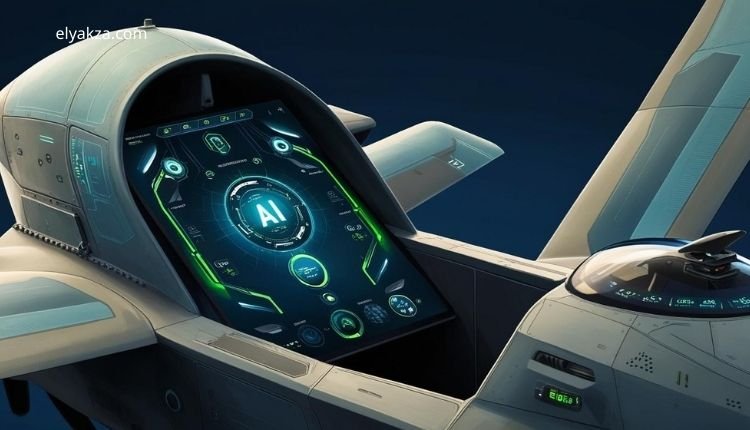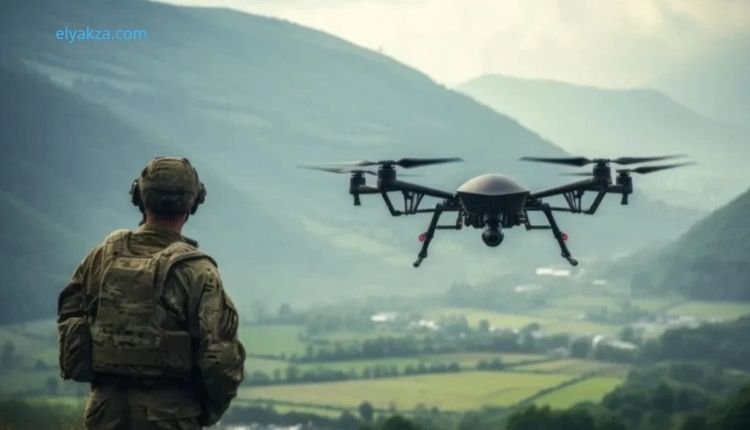The age of drones has brought both innovation and new dangers. Once used primarily for recreational purposes, drones have quickly evolved into powerful tools for logistics, surveillance, and even warfare. As their capabilities grow, so do the risks. Security forces now face challenges in differentiating between harmless hobbyist drones, commercial delivery units, and hostile unmanned aerial systems (UAS).
قائمة المحتويات
The rise of AI in drone defense represents a turning point in how military bases, critical infrastructure, and cities protect themselves. Artificial intelligence is no longer just a futuristic idea—it is a decisive tool against increasingly complex drone threats. By leveraging AI, defenders can detect, track, and neutralize drones with precision and speed that far surpasses human capabilities.
This article explores how AI is revolutionizing drone defense, the threats it addresses, and the emerging systems—like Lockheed Martin’s Sanctum™ Counter-UAS—that are proving this technology in real-world scenarios.
The Growing Threat of Drones
Drones are no longer confined to hobbyists or delivery experiments. They have become accessible, affordable, and versatile, making them attractive tools for criminal organizations, terrorists, and even nation-states.
- Terrorist applications: Armed drones can carry explosives or chemical payloads.
- Espionage risks: Small drones can gather surveillance data undetected.
- Swarm attacks: Coordinated fleets of drones can overwhelm defenses.
- Civilian hazards: Accidental incursions by hobbyist drones endanger airports, events, and infrastructure.
The challenge is clear: defenders must identify and respond to drone incursions within seconds, a task far beyond human reaction speed in a crowded radar environment.
This is where AI-powered systems change the game.
Why AI Is the Future of Drone Defense

Separating Signal from Noise
Radar and sensor systems face tremendous difficulty in environments filled with multiple aerial objects. Birds, aircraft, and drones create a cluttered radar picture. Traditional algorithms often struggle to distinguish between these moving objects.
AI in drone defense excels at learning the unique “signatures” of drones, distinguishing them from birds or aircraft, and tracking them with precision. Over time, machine learning models adapt to specific environments, learning local flight patterns, weather effects, and common false positives—making detection increasingly reliable.
Faster Threat Analysis
Spotting a drone is just the beginning. The real challenge lies in determining intent and deciding the correct response.
- Is it a harmless delivery drone?
- Is it armed?
- Can it be taken down with electronic warfare, cyber jamming, or lasers?
Human operators take precious minutes to analyze these scenarios. AI can make those assessments in milliseconds, instantly matching the best defensive weapon to the threat.
Countering Drone Swarms
Perhaps the greatest danger lies in swarm attacks, where dozens—or hundreds—of drones approach simultaneously. Human decision-makers are easily overwhelmed by such volume.
AI, however, can manage swarm defense in real time, prioritizing targets, assigning weapons, and adjusting tactics dynamically. With the right safety protocols, AI-driven defenses may be the only way to repel swarm assaults effectively.
“Read Also: Website Using WordPress“
Building Intelligent Counter-UAS Networks

Sanctum™: AI-Driven Drone Defense
One of the most advanced examples of AI in drone defense is Sanctum™, Lockheed Martin’s Counter-UAS system. Sanctum combines layered defense with a powerful AI-driven mission management system.
It can:
- Detect drones in cluttered radar environments.
- Assess threat levels and intent.
- Recommend the optimal weapon-target pairing.
- Adapt to new environments through continuous learning.
Continuous Learning Across Deployments
Sanctum uses a networked AI approach. When one deployment identifies a new drone threat or tactic, that knowledge is shared across the entire network. Each node becomes smarter, enhancing global defense readiness.
This makes Sanctum not just reactive, but proactive, staying ahead of evolving drone threats.
AI in Military Applications
Integration with Existing Defense Systems
Sanctum and similar AI systems integrate seamlessly with existing air and missile defense networks. For example, Lockheed Martin builds on proven platforms like the Aegis Combat System, which already defends against cruise missiles and advanced aerial threats.
Multi-Layered Defense
An AI-driven counter-UAS strategy combines:
- Sensors: For early detection.
- AI mission management: To analyze and prioritize threats.
- Effectors: Lasers, electronic jamming, or missiles to neutralize targets.
This layered approach ensures that no single defense mechanism is overwhelmed, creating a resilient shield against drones.
AI Beyond the Battlefield
While much of the discussion focuses on military defense, the potential of AI in drone defense extends to civilian applications as well.
- Airport safety: Preventing drones from disrupting flights.
- Critical infrastructure protection: Safeguarding power plants, ports, and communication hubs.
- Public event security: Detecting unauthorized drones over stadiums and gatherings.
- Border security: Identifying and tracking drones used for smuggling.
By extending AI-driven drone defense into civilian spaces, nations can mitigate risks before they escalate into crises.
“Read Also: CodeGeeX“
Ethical and Legal Considerations
With AI taking an increasing role in national security, concerns around ethics and legality must be addressed.
- Rules of engagement: AI systems must comply with international law.
- Human oversight: Despite automation, critical strike decisions should remain under human authority.
- Civil liberties: Surveillance capabilities must be balanced with privacy rights.
The success of AI in drone defense depends on building public trust and ensuring transparent, ethical use.
“Read Also: Manos“
The Future of AI in Drone Defense
The evolution of drone warfare ensures that threats will continue to grow more complex. The future of AI in drone defense will likely focus on:
- Greater autonomy: AI systems handling more decisions under human supervision.
- Faster learning cycles: Instant adaptation to new drone tactics.
- Global defense networks: AI nodes sharing intelligence across allied nations.
- Integration with space assets: Satellites providing broader detection capabilities.
In this future, AI will not just defend against drones—it will define how air security is maintained globally.
“Read Also: DeepSeek V3.1“
AI in Drone Defense: the Conclusion
The rise of drones represents both innovation and unprecedented risk. From small hobbyist drones to coordinated swarm attacks, the threat landscape is evolving faster than human defenses can adapt.
AI in drone defense offers the speed, precision, and adaptability required to safeguard military bases, critical infrastructure, and civilian populations. With systems like Lockheed Martin’s Sanctum™, defenders are already demonstrating how AI can outthink and outmaneuver drone threats.
As drones grow more sophisticated, only AI-powered defense systems can keep pace. By blending human judgment with AI’s rapid analysis, nations can ensure a future where drones are managed safely—protecting sovereignty, security, and peace.
المهندس عبد الرحمن خالد كاتب ومتخصص في الذكاء الاصطناعي وتقنيات المستقبل، حيث يسلط الضوء على أحدث الابتكارات في تعلم الآلة، معالجة اللغة الطبيعية، الروبوتات، وحلول الذكاء الاصطناعي في مختلف الصناعات. يقدم مقالات تحليلية وتوضيحية تفتح المجال أمام القارئ لفهم كيف يسهم الذكاء الاصطناعي في إعادة تشكيل العالم من حولنا.
بأسلوب علمي مبسط مدعوم بالخبرة الهندسية، يشرح عبد الرحمن خالد التطبيقات العملية للذكاء الاصطناعي في التعليم، الصحة، الأعمال، والتقنية، مع إبراز التحديات الأخلاقية والمجتمعية لهذه التكنولوجيا. كتاباته تجمع بين الرؤية المستقبلية والجانب العملي، مما يجعله مرجعًا موثوقًا لكل من يريد استكشاف عالم الذكاء الاصطناعي بعمق.

